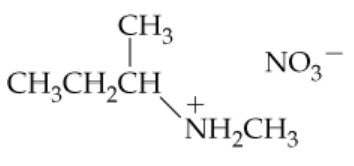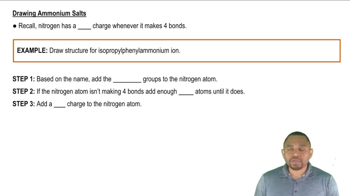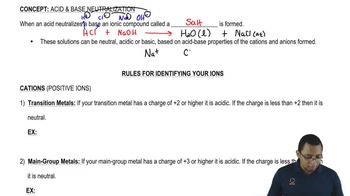Here are the essential concepts you must grasp in order to answer the question correctly.
Ammonium Salts
Ammonium salts are ionic compounds formed from the protonation of ammonia (NH3) or amines, where the nitrogen atom carries a positive charge. These salts typically consist of a positively charged ammonium ion (NH4+) and a negatively charged anion. They are commonly used in various applications, including fertilizers and pharmaceuticals.
Recommended video:
Drawing Ammonium Salts Concept 2
Amines Classification
Amines are classified based on the number of carbon groups attached to the nitrogen atom. Primary amines have one carbon group, secondary amines have two, and tertiary amines have three. This classification affects the properties and reactivity of the amines, which in turn influences the characteristics of the corresponding ammonium salts.
Recommended video:
Amine Classification Concept 1
Protonation and Salt Formation
Protonation is the process by which a base, such as an amine, gains a proton (H+) to form a positively charged ion. In the context of ammonium salts, this process leads to the formation of the ammonium ion. Understanding protonation is crucial for determining the structure and classification of the resulting ammonium salts based on the original amine.
Recommended video:
Ionic Salts (Simplified) Concept 1

 Verified step by step guidance
Verified step by step guidance Verified video answer for a similar problem:
Verified video answer for a similar problem:



 :55m
:55m